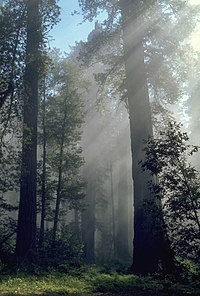
Photo from wikipedia
Paleoecology Sedimentary pollen records are reliable indicators of patterns of plant diversity through time. Kunes et al. show that they can also be used to track patterns of habitat disturbance.… Click to show full abstract
Paleoecology Sedimentary pollen records are reliable indicators of patterns of plant diversity through time. Kunes et al. show that they can also be used to track patterns of habitat disturbance. Known niche preferences of plant species can often be associated with different disturbance regimes. Pollen records from central Europe throughout the 12,000 years of the Holocene show a consistent increase in species diversity over time in this region. The greatest levels of disturbance occurred during the earliest and most recent millennia, and the least in between. Early Holocene high disturbance and low diversity were associated with rapid postglacial climate change, whereas more recent disturbance and greater diversity reflected the increasing habitat diversity and patchiness caused by the spread of human influence. J. Ecol. 10.1111/1365-2745.13136 (2019).
Journal Title: Science
Year Published: 2019
Link to full text (if available)
Share on Social Media: Sign Up to like & get
recommendations!